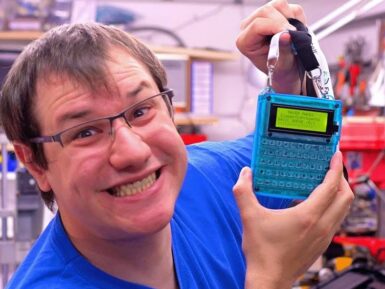
Overview
Grove Base Shield provides a simple way to connect with Arduino boards and help you get rid of breadboard and jumper wires. With the 16 on-board Grove Connectors, you can easily connect with over 300 Grove modules! The pinout of Base Shield V2 is compatible with the Arduino UNO, Arduino Leonardo and the Arduino Mega.
The Arduino Shield usually has the same pin position as the Arduino development board and can be stacked and plugged into the Arduino to implement specific functions.
Power Compatible:
Every Grove connector has four wires, one of which is the VCC. However, not every micro-controller main board needs a supply voltage of 5V, some boards only need 3.3V. That's why we add a power toggle switch to Base Shield V2 so that you can select the suitable voltage of the micro-controller main board you are using via this switch.
For example, if you are using Arduino UNO with Base Shield V2, please turn the switch to 5V position; while using Seeeduino Arch with Base Shield V2, please turn the switch to 3.3V.
Board Compatible:
The pinout of Base Shield V2 is the same as Arduino Uno R3, however Arduino Uno is not the only one that the Base Shield V2 is compatible with, here we listed the boards that we have confirmed that can be used with Base Shield V2:
- Arduino Uno
- Seeeduino V4.2
- Arduino Mega / Seeeduino Mega
- Seeduino LoraWan
- Arduino Leonardo / Seeeduino Lite
- Arduino 101
- Arduino Due
- Intel Edison
- Linkit One
Conformities
Get Inspired
Max out the digital I/O on the Arduino Uno Rev3!

Although we recently launched the new 32-bit Arduino UNO R4, Clem Mayer wanted to honor its 8-bit predecessor by making something special using the Rev3. Drawing on old hardware designs, the ZX-81 is an 8-bit computer based on the Z80 processor which has 1KB of RAM and 1KB of EEPROM available for the user to utilize within the operating environment — typically a BASIC interpreter shell. Similarly, Mayer wanted to have one ATmega328P run the TinyBASIC interpreter while a secondary ATmega328P would handle the external keyboard and display due to resource constraints. The PCB was designed to fit within the form factor of a standard event badge, complete with a small multiplexed keyboard and a 20x4 monochrome LCD screen to fit the retro theme. On the back layer of the board are both AVR MCUs in a surface-mount package to save on space along with a pair of battery holders and a buzzer/power delivery circuitry. Although the code was working for the most part, Mayer still encountered a couple of problems which he solved mainly through bodges and ensuring the LCD was producing adequate contrast. Once the hardware was functioning as intended, he 3D-printed a case and turned it into a lanyard-attached device — complete with blinky lights and a highly interactive interface. The finished handheld computer badge is a testament to the power and versatility of the Arduino Uno R3. By utilizing all available pins and space on the chip, Clem successfully transforms the Arduino Uno into a handheld computer with capabilities like the ZX-81. The project serves as a fitting tribute to the beloved Arduino UNO R3 and showcases the potential for DIY electronics with microcontrollers. To see more on this project, be sure to watch Mayer's video below!







